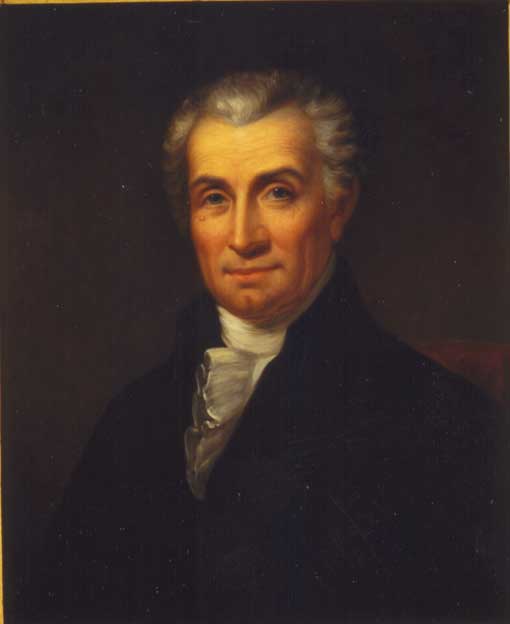James Monroe 1758–1831
Rembrandt Peale (1778–1860)
Oil on canvas, 1817–25

James Monroe Museum and Memorial Library, Fredericksburg, Virginia
When James Monroe was elected president in 1816, America was in the midst of an “Era of Good Feelings,” a phrase coined by a Boston newspaperman. Although the Treaty of Ghent merely restored prewar relations between Britain and America, much had changed. Britain was no longer a threat on the northern border, its alliances with the Indians ended.
Albert Gallatin noted the reappearance of “national feelings.” Jeffersonian Presidents Madison and Monroe adopted a nationalistic tone and endorsed Federalist policies: a national bank, tariffs on manufactures, and internal improvements.
This “shimmering illusion” of harmony lasted until the Panic of 1819, which brought severe credit contraction, business failures, and hardships for debtors and farmers. That same year, however, Spain ceded to the United States all claims to both Florida and the Pacific Northwest. A new national excitement would soon emerge around the figure of Andrew Jackson.
